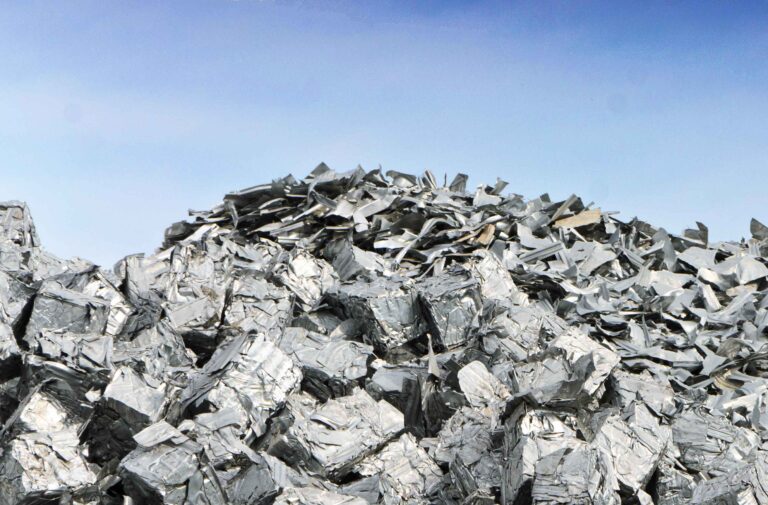Aluminum is one of the most versatile and essential materials when it comes to sustainable design. Its low weight, high strength-to-weight ratio, corrosion resistance, and recyclability make aluminum an ideal material for a wide range of applications – from automobiles and aircraft to furniture and buildings. Aluminum offers an efficient solution for construction projects, as its lightweight can reduce energy costs associated with transportation, installation, or lifting.
Aluminum also has excellent thermal insulating properties which can help keep buildings comfortable year-round while using minimal energy for cooling or heating purposes. Furthermore, aluminum’s recyclable nature makes it possible to reuse scrap pieces without sacrificing quality or performance; this helps create circular economies that are critical components of sustainability initiatives today.
Benefits of Using Aluminum in Sustainable Design
Aluminum is one of the most sustainable materials available to designers and architects. Its unique properties allow it to be used in various ways that benefit both the environment and users. Using aluminum can reduce energy consumption, minimize construction waste, increase durability, promote reuse, and enhance aesthetic appeal.
- Energy Consumption: Aluminum is an excellent thermal conductor which means less heat energy is required for air conditioning or heating in buildings made with aluminum than with other materials such as steel or timber. This reduces power usage by a great deal leading to lower electricity bills.
- Minimal Construction Waste: Due to its lightweight nature Aluminum does not require heavy machinery for installation making it more efficient during construction compared to other options like concrete or steel which are bulky and create large amounts of waste when being transported from site to site. Additionally, because of aluminum’s strength and durability, there is no need for additional reinforcement like you would see with wood products resulting in even less waste on-site.
- Durability: Aluminum has superior corrosion resistance due to its naturally occurring oxide layer which ensures longevity even after years of exposure to sunlight and rainwater without requiring expensive maintenance procedures, unlike some other metals like iron or copper which are prone to rusting over time leading them to need replacements sooner rather than later making them costly investments over long term periods.
- Reuse/Recyclability: The fact that aluminum can easily be recycled makes this material incredibly attractive as it can be reused multiple times without losing any structural integrity allowing builders/designers/architects to reuse their materials thus creating a much smaller environmental footprint compared to traditional methods where new resources were needed each time something had been altered or replaced resulting in excessive harvesting practices across many industries worldwide.
- Aesthetics Appeal: Last but certainly not least; one should never overlook how beautiful metal surfaces look when integrated into architectural designs! The sheen quality associated with metal gives off a luxurious feel while also reflecting light at different angles giving buildings a magnificent appearance once installed properly whether they’re utilized indoors or outdoors!
Challenges to Utilizing Aluminum for Sustainable Design

One of the most significant challenges when it comes to utilizing aluminum for sustainable design is its ability to corrode. This corrosion can occur due to exposure to water or oxygen, resulting in rust and other forms of degradation that will eventually weaken the material’s structural integrity.
Aluminum also tends to thermal expansion, meaning that if exposed to extreme temperatures, it may expand more than other materials and cause damage or instability. Finally, aluminum is often used as an alloy with other metals which can interfere with its recyclability and make it challenging for engineers and designers looking for ways to use the material sustainably.
Examples of Innovative Uses of Aluminum for Sustainable Design
Aluminum has become an increasingly important material in sustainable design due to its unique combination of properties. Aluminum can be found in many applications, from the automotive and aerospace industries to consumer products such as laptops and mobile phones. It is lightweight, corrosion-resistant, recyclable, and environmentally friendly.
Examples of innovative uses of aluminum for sustainable design include the use of aluminum alloys for structural components like bridges or buildings that are built with minimal waste material; using recycled aluminum in construction projects to reduce cost; utilizing 3D printing technology with aluminum powder to create complex parts with less energy consumption; creating lightweight yet durable furniture pieces made out of aluminum tubes; integrating solar cells into anodized aluminum frames for renewable energy systems; and constructing high-endurance bicycle frames out of ultra-lightweight but extremely strong alloyed aluminum materials.
The versatility of this metal makes it a valuable resource when it comes to green building practices and designs that emphasize sustainability while still providing necessary functionality. Aluminum is often used as a substitute for heavier steel or wood because it reduces overall weight without sacrificing strength or rigidity – making it ideal for creating structures that have long lifespans but don’t require frequent replacement or repair over time. Additionally, since most forms are 100% recyclable, any leftover materials can be repurposed rather than sent off to landfill sites which further increases its appeal when considering eco-friendly options during construction processes.


